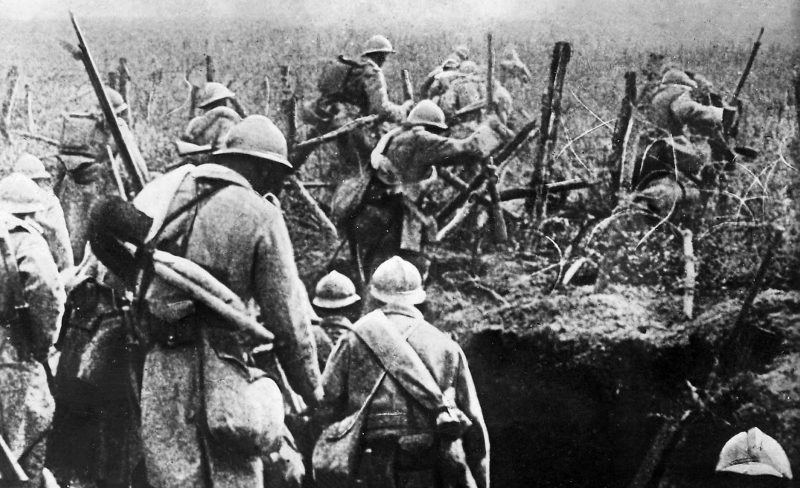The World War I battlefields in France and Belgium are now farmlands dotted with pleasant villages and well-kept cemeteries.
There is one battlefield, though, that is described by visitors as bleak, depressing, haunting, and spooky.
That site is Verdun, where one of the worst battles in the history of mankind played out. No Australians fought at Verdun, but it still played a role in Australia’s WWI experience.
In 1914, German forces moved through Belgium and France. It was a vast front, involving millions of men. The French and British opposed them in a series of battles that had the highest levels of casualties in the entire war.
By late 1914, both sides dug in for the trench warfare that WWI would become known for. Trenches stretched from Switzerland to the North Sea. Through 1915, waves of French and British attacks did nothing to break through the German lines, at great cost to the Allies.
Germany, fighting British and French on the West and Russians on the East, developed defenses and held off every attack.
Australia was not involved in any of this. When the Australian Imperial Force set sail in November of 1914, it was assumed they would head to Europe. Instead, the British camps were full of new recruits from Britain and its colonies. With winter approaching, the Anzacs were sent to Egypt for training.
In the meantime, Britain developed its Gallipoli plan. The Anzacs were in a convenient location, so they were sent to Gallipoli on April 25, 1915. They withdrew in December, heading back to Egypt for rest and reinforcement. The Australian 1st and 2nd Divisions didn’t reach France until early April.
By then, the Germans had already made their move at Verdun. German General Erich von Falkenhayn strategized that France would put everything it had into defending Verdun. The losses that they would receive would force it to surrender. Britain would then pull out, and the Western Front would be won. The purpose of Verdun was to bleed France dry.
February 21, 1916 saw the Germans unleash artillery and infantry attacks on the French. The French responded by throwing more troops at the Germans. Barrages of artillery shells pulverized troops into a hellscape of body parts, blood, and the screams of the wounded.
Almost ten months after it started, on December 18, the battle ended; it was the longest battle of World War I. Experts estimate that there were one million casualties, including 300,000 deaths, split fairly evenly between the two sides.
Before Verdun, in late 1915, Britain and France formulated a plan to win the war in mid-1916. That plan was the Battle of the Somme, which began on July 1st. When Germany attacked Verdun, the Somme was left mainly to the British.
At this point, the AIF made their entrance into France. Their first participation was in the Battle of Fromelles in July. The goal was to stop German reinforcements from reaching the Somme. They failed and lost almost 2000 soldiers in the attempt.
They followed that loss with the Battle of Pozieres, a direct participation in the Somme battle. They then fought at Moquet Farm. In only six weeks of fighting, the AIF accrued 23,000 casualties, including almost 7000 fatalities.
The battlefield of Verdun attracts less Australian visitors than other battle sites where Australians fought and died. But Verdun still shows the scars of war, more so than the Somme or Flanders. Right after the war ended, the French declared the Verdun site to be part of the “red zone” where the damage and contamination were too extensive to allow humans to inhabit.
100 years later, the fields are a pine forest. The trenches and the craters remain along with the fortifications. Visitors to the area describe it as “spooky.” There are more that 100,000 French and German soldiers in the area with no known grave. The main memorial in the area is the Douaumont Ossuary. It contains the unidentified remains of 130,000 French and German soldiers. Verdun is also home to large amounts of unexploded shells, both high explosive, and poison gas.
Ashley Ekins, Australian War Memorial senior historian, says that Verdun is not like other battle sites. “There is something very haunting about those huge fortresses, Fort Douaumont and Fort Vaux. They still stand there much as they were left at the end of 1916, horrible places which still carry the memories of these huge battles,” he said.
Fort Douaumont was conquered by the Germans in 1916, early in the battle. In May of 1916, there was a series of accidental explosions that killed 800-900 German troops. The disaster was so great that two galleries that contained 679 bodies were walled up. They have not been opened in 100 years.
